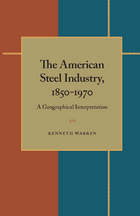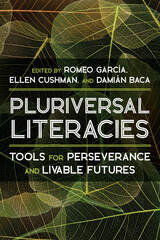
In major discussions of the east coast, Pittsburgh, the Ohio Valley, the Great Lakes, the South and the West, Warren analyzes the location and relocation of steel plants over 120 years. He explains the influence on location of a variety of factors: The accessibility of resources, the cost of transportation, the existence of specialized markets, and the availability of entrepreneurial skills, capital, and labor. He also evaluates the role of management in the development of the industry, through an analysis of individual companies, including Bethlehem, Carnegie, United States Steel, Kaiser, Inland, Jones and Laughlin, and Youngstown Sheet and Tube.
Warren examines the influence exerted on the industry by complex technological changes and weighs their significance against market forces and the supply of natural resources. In the production process alone, the industry changed from pig iron to steel; from charcoal to anthracite; to bituminous coking coal; and from the widespread use of low-grade ore from the eastern United States, to the high quality but localized deposits of the Upper Great Lakes, to imported ores.
Unlike other industrialized nations, the United States has undergone major geographical shifts in steel consumption since the 1850s. As the American population moved south and west into new territory, steel followed. Warren concludes that these radical alterations in the distribution and demand were the decisive force in the location of steel production.

Parlor Ponds: The Cultural Work of the American Home Aquarium, 1850–1970 examines the myriad cultural meanings of the American home aquarium during the nineteenth and twentieth centuries and argues that the home aquarium provided its enthusiasts with a potent tool for managing the challenges of historical change, from urbanization to globalization. The tank could be a window to an alien world, a theater for domestic melodrama, or a vehicle in a fantastical undersea journey. Its residents were seen as inscrutable and wholly disposable “its,” as deeply loved and charismatic individuals, and as alter egos by aquarists themselves.
Parlor Ponds fills a gap in the growing field of animal studies by showing that the tank is an emblematic product of modernity, one using elements of exploration, technology, science, and a commitment to rigorous observation to contain anxieties spawned by industrialization, urbanization, changing gender roles, and imperial entanglements. Judith Hamera engages advertisements, images, memoirs, public aquarium programs, and enthusiast publications to show how the history of the aquarium illuminates complex cultural attitudes toward nature and domestication, science and religion, gender and alterity, and national conquest and environmental stewardship with an emphasis on the ways it illuminates American public discourse on colonial and postcolonial expansion.
READERS
Browse our collection.
PUBLISHERS
See BiblioVault's publisher services.
STUDENT SERVICES
Files for college accessibility offices.
UChicago Accessibility Resources
home | accessibility | search | about | contact us
BiblioVault ® 2001 - 2024
The University of Chicago Press









